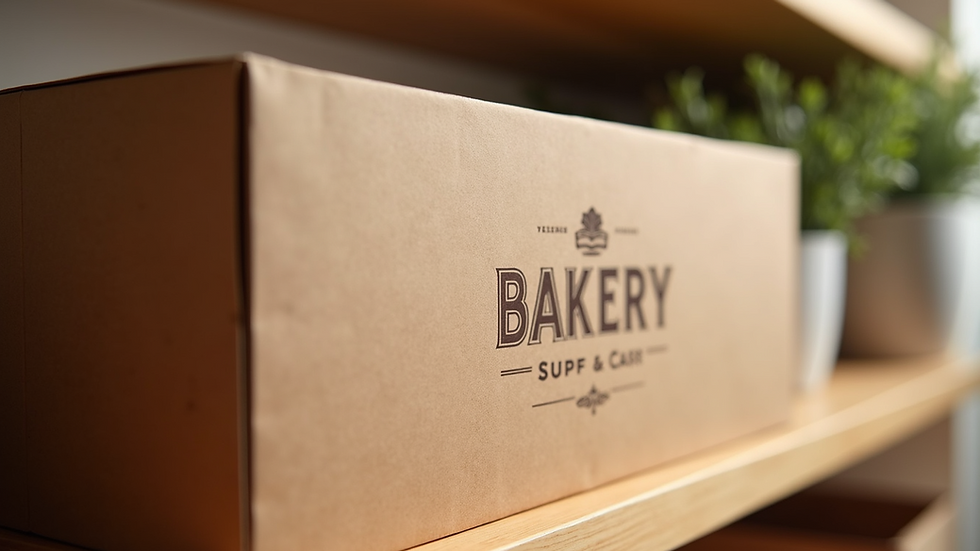6 Essentials For Running A Successful Cloud Kitchen Business In 2024
- Adarsh Gupta
- Sep 14, 2021
- 4 min read
Updated: May 14, 2024

In recent years, the concept of cloud kitchens has revolutionized the food industry, offering a cost-effective and efficient way to run a food business. These virtual restaurants operate without a traditional brick-and-mortar location, relying on online orders and delivery services to reach customers. If you're considering starting a cloud kitchen business or looking to enhance your existing one, here are six essentials to keep in mind for success in 2024.
1. Strong Online Presence
To succeed in the virtual restaurant space, focus on creating a strong online presence through digital marketing, social media engagement, and partnerships with food delivery apps. According to a survey by Toast, 59% of restaurant operators believe that online ordering and delivery have positively impacted their business. Providing a seamless ordering and delivery experience for customers can lead to increased sales and customer loyalty.
2. Unique Selling Proposition (USP)
Differentiate your cloud kitchen by offering a unique selling proposition (USP) that sets you apart from competitors. According to a report by Mordor Intelligence, the global cloud kitchen market is expected to grow at a CAGR of 12.8% from 2021 to 2026. Identifying what makes your food stand out and using it to attract customers can help you carve out a niche in the market.
3. Efficient Operations
Starting a cloud kitchen involves finding a suitable location, setting up a kitchen with the necessary equipment, obtaining necessary licenses and permits, and creating a menu that caters to your target audience. According to a report by Euromonitor International, the delivery-only model of cloud kitchens is projected to be the fastest-growing format in the food service industry, with a CAGR of 14% from 2019 to 2024.
4. Market Trends
Cloud kitchens operate by receiving online orders through various food delivery platforms. They prepare food in a central kitchen facility and then deliver it to customers' doorsteps. This model eliminates the need for a physical dining space, reducing overhead costs. According to a report by Data Bridge Market Research, the global cloud kitchen market is expected to reach USD 139.37 billion by 2028, growing at a CAGR of 12.3% from 2021 to 2028.
5. Packaging Material
Packaging plays a crucial role in the success of a cloud kitchen business. Use high-quality, eco-friendly packaging material that keeps food fresh during transit and reflects your brand's commitment to sustainability. According to a study by Nielsen, 73% of Indian consumers are willing to pay more for sustainable packaging.
6. Inventory Management
Effective inventory management is essential for a cloud kitchen to operate efficiently. Use inventory management software to track ingredients, monitor stock levels, and minimize wastage. This will help you maintain a lean inventory and reduce costs. According to a report by Allied Market Research, the global inventory management software market is projected to reach USD 5.77 billion by 2026, growing at a CAGR of 10.5% from 2019 to 2026.
In conclusion, running a successful cloud kitchen business requires a combination of innovation, strategic planning, and a deep understanding of your target market. By focusing on these six essentials, you can build a thriving cloud kitchen that delights customers and drives profitability. As the saying goes, "Success is not the key to happiness. Happiness is the key to success. If you love what you are doing, you will be successful."
FAQs
How do I start a cloud kitchen business?
Starting a cloud kitchen involves several steps, including selecting a suitable location, obtaining the necessary licenses and permits, designing your menu, and setting up your kitchen
What is the difference between a cloud kitchen and a traditional restaurant?
A cloud kitchen operates solely for delivery and takeaway orders, without a physical dine-in space. In contrast, a traditional restaurant has a physical location where customers can dine in.
How does a cloud kitchen work?
Cloud kitchens receive orders through online platforms or mobile apps. They prepare and package the food for delivery or takeaway, often using third-party delivery services to reach customers.
What are the benefits of a cloud kitchen?
Cloud kitchens offer several benefits, including lower overhead costs, flexibility in location, and the ability to reach a wider customer base through online ordering platforms.
How can I market my cloud kitchen business?
Marketing strategies for a cloud kitchen include leveraging social media, partnering with food influencers, offering promotions and discounts, and optimizing your online presence.
What are the key challenges of running a cloud kitchen?
Challenges of running a cloud kitchen include managing delivery logistics, maintaining food quality and consistency, and competing in a crowded market.
What are the popular food trends for cloud kitchens in 2024?
Popular food trends for cloud kitchens in 2024 include plant-based options, global cuisines, and innovative packaging solutions.
How can I ensure food safety in my cloud kitchen?
Ensuring food safety in a cloud kitchen involves following strict hygiene practices, proper food storage and handling procedures, and regular equipment maintenance.
What are the startup costs for a cloud kitchen business?
Startup costs for a cloud kitchen business can vary depending on factors such as location, kitchen size, and equipment needs. It's essential to create a detailed budget and financial plan.
How can I scale my cloud kitchen business?
Scaling a cloud kitchen business involves expanding your menu offerings, increasing production capacity, and expanding your delivery radius. It's crucial to manage growth carefully to maintain food quality and customer satisfaction.




This article offers valuable insights into the essentials of running a successful cloud kitchen. Emphasizing a strong online presence, unique selling propositions, and efficient operations aligns well with current industry trends. The focus on sustainable packaging and inventory management is particularly noteworthy.